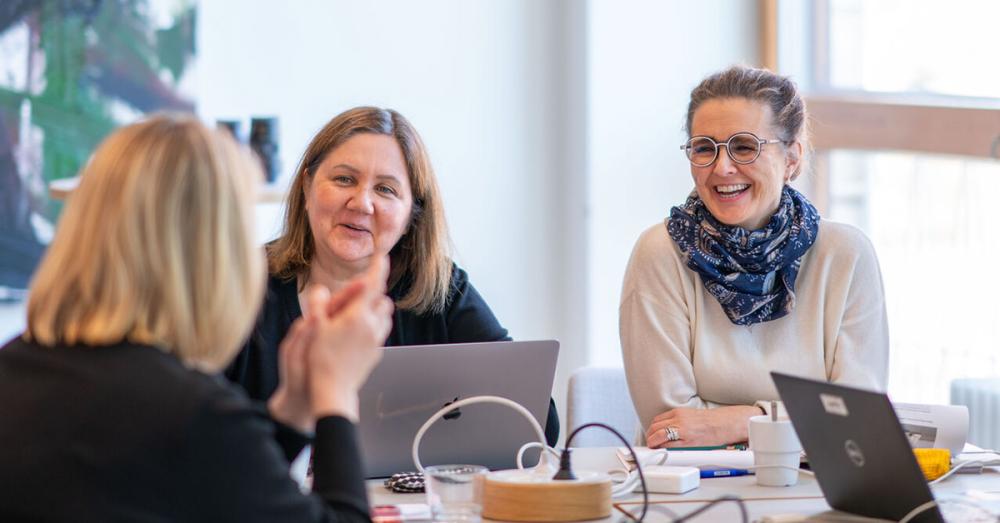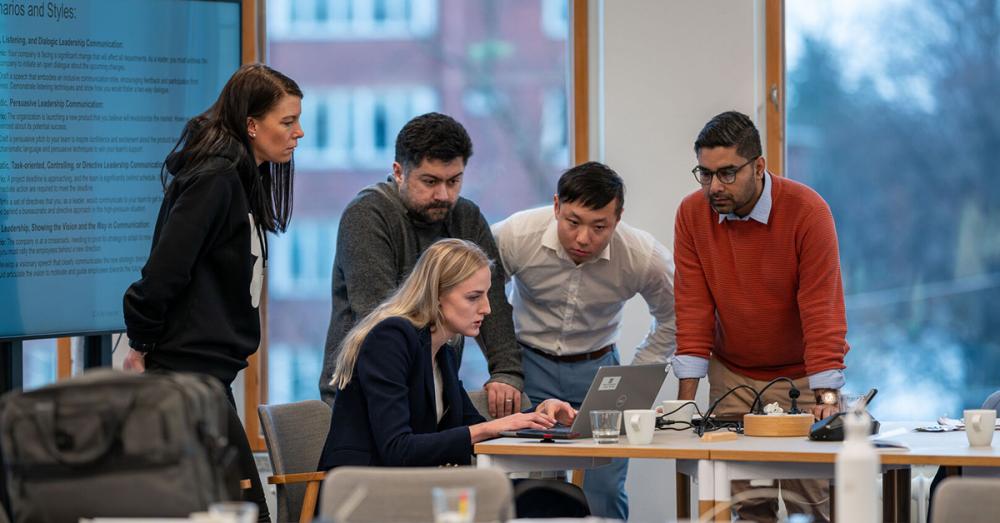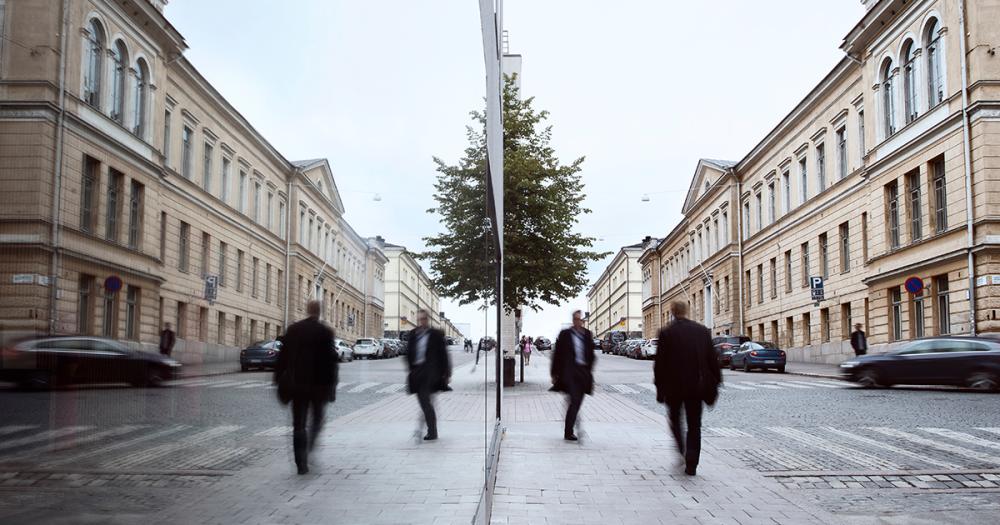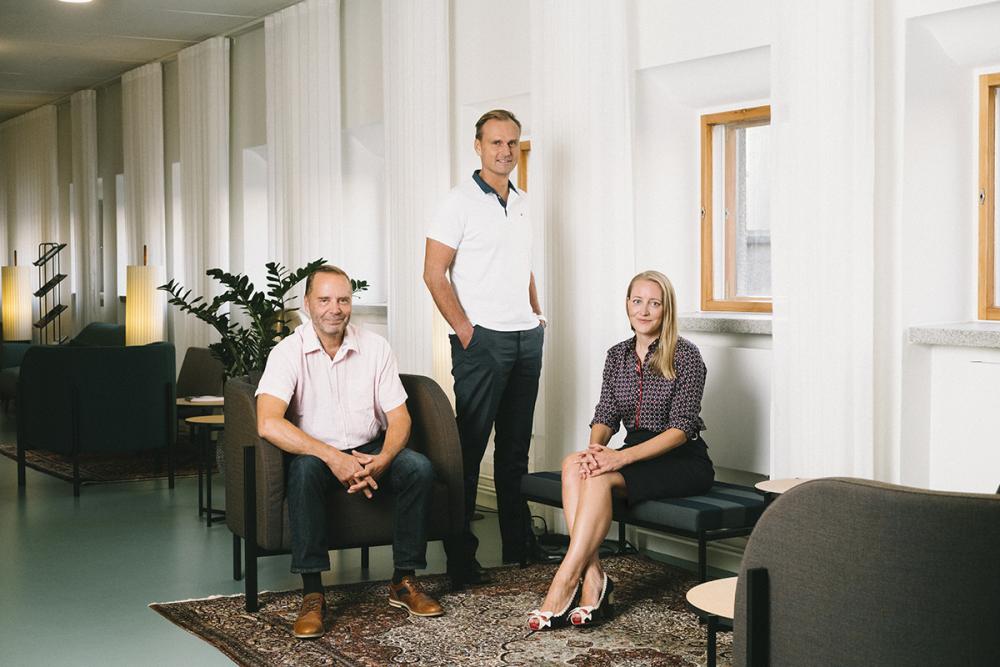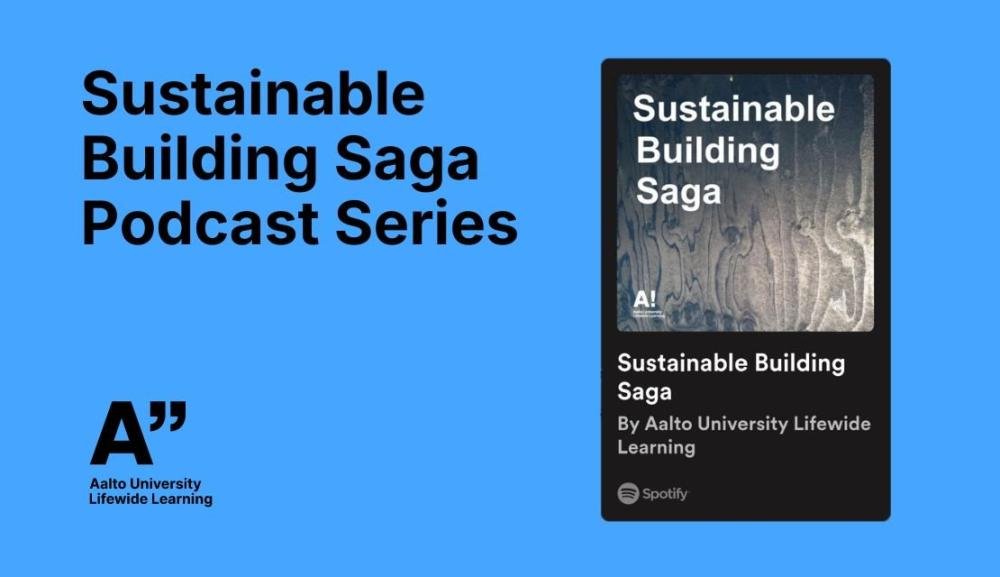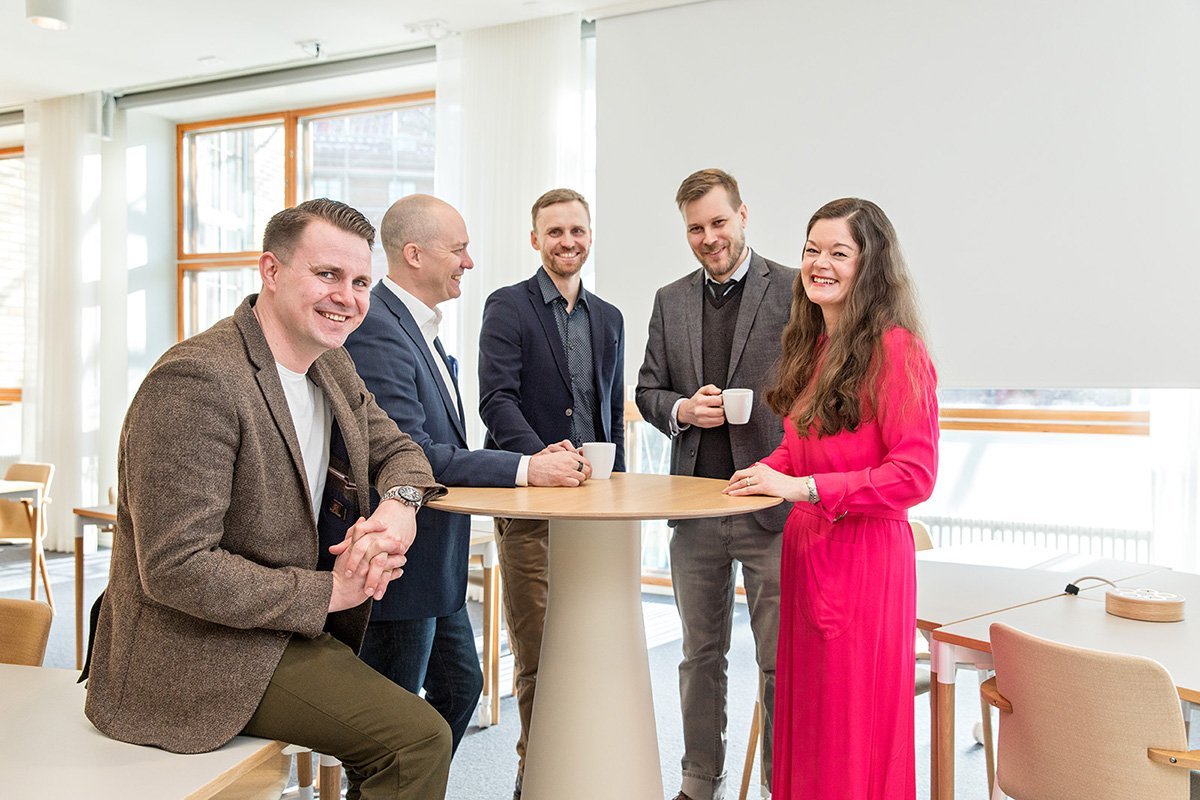The mission of the Football Association of Finland (FAF) is "football for everyone".
In terms of registered players, football (soccer) is the most popular sport in Finland – but when the number of registered players is looked at in proportion to population, Finland places last in the Nordics.
When five Aalto EMBA participants began working on their Business Strategy Project in fall 2020, this was the challenge they set to tackle – as a consultation project for the Football Association of Finland.
We wanted to find out what measures could be taken to ensure that anyone wanting to play football or futsal in Finland would have the opportunity to do so."
The Aalto EMBA Business Strategy Project is a nine-month-long team project for which the participants themselves propose topics and the most popular ones are selected and taken forward. An integral part of each project is academic research, supported by skilled academic tutors from Aalto University.
The aim of the project was to identify the factors that either support or limit the mission of the FAF.
"We wanted to find out what measures could be taken to ensure that anyone wanting to play football or futsal in Finland would have the opportunity to do so," says Hannu Tihinen, who was the team's only FAF employee and served as the project owner.
The other members were Janne Louhikari, Rami Niinikoski, Lauri Pehu-Lehtonen and Liisa Räsänen. The team's academic tutor was postdoctoral researcher Philip Gylfe from the Department of Management Studies at the Aalto University School of Business.
Social dimension boosted motivation
The FAF's vision is to turn Finland into a successful footballing nation by 2030, but in addition to wanting to build a winning football culture, it sees the game as an important contributor to the nation's wellbeing.
The number of registered players is over 140,000, and about half of them are under-12s. With the current number of players, football's SROI (Social Return on Investment) is estimated at EUR 1.96 billion. This is the social return of capital invested in football, that is, football's direct economic impact as well as its impact in terms of savings in healthcare and social costs and benefits.
For the team, the social dimension made the project even more attractive.
"I immediately knew it would be easy to get motivated and even put in some extra effort," says Rami Niinikoski.
No wonder then that Philip Gylfe, the team's tutor, says the team succeeded exceptionally well.
"They clearly had a desire to delve quite deeply into the research process. They took it seriously and spent a lot of time on it. They chose ethnographic research as one of their main research methods, conducted a large number of interviews and took a lot of notes," Gylfe says.
The team found the research process so inspiring that at times the tutor had to curb their enthusiasm.
"They wanted to keep going deeper and deeper, and I had to pull them back to the surface. They were so captivated by the process that they could have continued with the ethnographic research for months on end."
Liisa Räsänen admits that the team had set its sights high. "We set out to get the best possible grade."
The results reflect the commitment
The data collected by the team speaks for itself. In their final report, the team, which utilized the agile Scrum method, lists everything that went on during the nine-month-long project: 118 meetings, 66 sprint events, 14 sprint reviews, 12 retrospectives, 20 sprint planning meetings, six tutor meetings, ethnographic research focusing on children's practice on two separate occasions, two group interviews with teens, six individual interviews, organization culture survey, digital maturity survey, and a survey focusing on football culture and values among Finnish fans of football.
"There was a lot to do, but it didn't feel like a burden, it just pulled us straight in," says Niinikoski.
There was a lot to do, but it didn't feel like a burden, it just pulled us straight in."
The team even held daily Scrum meetings despite working for different organizations.
"We considered the level of commitment we could give and ended up having a 15-minute Scrum meeting three mornings a week. This way everyone could see the big picture and stay on top of what the others were doing," explains Janne Louhikari.
The tight schedule made for a close-knit team.
"It may not have been the fastest or most straightforward way, but it definitely paid dividends in terms of the end result," Lauri Pehu-Lehtonen says.
And if Gylfe commeds the team for their commitment, the team also sings their tutor's praises.
"It was very helpful that the tutor was interested in the topic himself. We met with him several times, which assured us that we were moving in the right direction and in the right manner. This also helped us change direction after a couple of months when the need arose," says Räsänen.
They also give credit to the management at the FAF, whose commitment to the project they see as a key success factor. The FAF was involved in formulating the research question and kept close contact with the team during the entire process. Hannu Tihinen acted as a link in both directions.
Dividing roles and responsibilities was easy as ABC
The group lined up for the project like a football team: each member had their own clear-cut role to perform. The Scrum method provided a suitable framework as Scrum teams are self-managing and there's no project manager as such. Louhikari served as Scrum Master and Tihinen as product owner. The others formed the development team.
"Each one of us found their strengths during the process, and Philip was a good coach. The external kitmen [Saana Kaihu and Tinja Lindfors from Aalto EE who were responsible for the Aalto EMBA 2020 Spring group] made sure that everything went smoothly," Liisa Räsänen summarizes.
There were, of course, a few hiccups along the way.
"With such a democratic method, there are bound to be conflicts, but we tried to stay positive and constructive. Scrum helped, because it includes a retrospective after each sprint, where the team reviews lessons learned using four quadrants and gives each other feedback. We really worked as a team, which may well have been the highlight of the entire project," says Pehu-Lehtonen.
For Philip Gylfe, one of the group's assets was the way they were able to divide the roles between themselves almost as if by default. The natural-born researcher, the reader, the writer, and the analyst all found a place in the team.
The project was a success also from the FAF's perspective.
"The really amazing thing is that we were able to put together such a talented group of people whose work supports the entire organization's mission. Nothing like this has ever been done in the history of the FAF, and I doubt it will ever be repeated either," says Hannu Tihinen.
Now that the work has finished, Tihinen has put a lot of effort in making the results visible within the association.
"We have tried to emphasize to the organization how important it is to keep repeating our core messages time and time again, as well as developing the organization's culture and values. We have to build a football culture that encourages participation by all those who are interested. This was one of the key outcomes from the project."
Takeaways from the project are already in good use
While conducting the research, the team found that adult football enthusiasts also want to train and play under competent coaching. That's why they decided to recommend, for example, providing coach training for people who want to work with adults but not at the top level.
I'm happy with all the recommendations we came up with. Now it's up to the FAF to decide which ones to adopt."
The project also generated a concept for a Futari mobile application, which would improve football's accessibility and function as an interface between the FAF and its external stakeholders.
"I'm happy with all the recommendations we came up with. Now it's up to the FAF to decide which ones to adopt," says Räsänen.
For her part, she says she's gained, for example, a new perspective on leadership. The power of community and cooperation became evident.
"None of us knew each other beforehand, so the project was kind of an experimental laboratory. While researching the FAF, we also focused on improving the culture of our own miniature organization and the end result was phenomenal. It has given me fresh insights on my work as a leader: how to build a high-functioning team and how important it is to have psychological safety and trust as well as clear targets to work towards. The project offered many lessons, which I have already been able to put to use in my own job," says Räsänen.
Leadership feeds on research
Tihinen and Louhikari were particularly impressed by the benefits of research on cultural environment.
"Ethnographic research provides a lot of information on the character and operations of the organization in question. It truly validated the theoretical ideas we had talked about earlier," Louhikari says.
For the team, one of the highlights was the further development they did on the cultural cultivation theory by Harrison & Corley. According to Philip Gylfe, the group's potentially greatest success was managing to build a bridge between theory and practice.
The project formed a clear arc using academic research methods and theories to generate practical benefits. The end result is like a work of art."
"The project formed a clear arc using academic research methods and theories to generate practical benefits. The end result is like a work of art. First, the participants collected material and then applied different theories to it, just like in an artistic process, the artists experiments with different colors, brushes, and canvases and uses them to create something unique."
The artistic process provides a point of comparison for Gylfe's own role in the project, too.
"Just like an artist may have several drafts of his work, the group had several versions of its final report, which I commented on along the way. We had good conversations focusing on the direction the project should take. The quality of the team's report was so high to begin with that I could challenge them rather more than is generally the case. They were willing to receive even sharp criticism, which made the end result even better."
Gylfe has noticed that the EMBA Business Strategy Project is an excellent way to bring up the value of scientific research.
"It was clear the team understood how important research is in terms of organizational leadership."
|
Aalto EMBA Business Strategy Project |
You can dowload the Business Strategy Project conducted for FAF via the link below:
